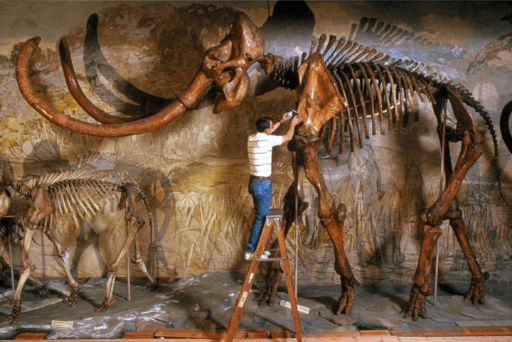Mammoths: Who were they? When did they live here?
We have all heard of the historical Ice Age that has made every man shudder on earth. It never gets boring to learn more about this era as it is steeped in mysteries and suspense for us. If you have ever wondered what we have from the Ice Age here for you, we are about to make you jump with joy.
Mammoths are incredibly gigantic elephants that became extinct in the Ice Age millions of years ago. Thus, today we are going to talk about these creatures and unleash more about their being. So, let us start right away!
All About Mammoths That You Should Know
What were they?
Without getting too deep, Mammoths were the relatives of our modern elephants. The Asian and African elephants, thus, resemble Mammoths to a drastic extent. They are mostly said to have lived in the North American and South American regions, where they were also hunted enormously for food and fur. They were the last species of the genus and died around the time of the final glacial retreat.

How did they look?
The woolly Mammoths were giant elephant-like animals that got extinct during the Ice Age. They were almost 9 to 14 feet in height and weighed around 6 to 10 tons. Although they looked very similar to modern elephants, their giant size made them stand out. Their tusks were almost 5 to 6 feet in females and 8 to 9 feet in males. Generally, they were herbivores and, thus, ate anything grassy or bushy. The most surprising thing is that sources claim that they may have consumed around 700 pounds of grass per day. Their lifespan was also excellent that lasted between 60 to 80 years. Under their extremely woolly layers was a layer of insulating fat about 8cm thick. However, the ears of these animals were smaller than the modern elephants and other mammals.
What did they eat and thrive on?
Mammoths were not just beasts by their size; they also ate massively. It is said that they spent almost 17 to 18 hours feeding or moving towards a source of water. They also consumed 60 to 300kg of food each day and drank around 60 to 160L water daily. That is why they also produced ample dung that came about 140 to 180kg dung per day. Imagine what would have happened if they continued to exist to this day.

Where and when did they live?
Over the years, many remains of these animals have been found in the North American, Asian, and European regions. They are said to have extended thousands of years ago in these regions. It is said that they started emerging in the East Asian parts from where they began to expand their tribe. Three species lived in the United States, known as the Columbian Mammoth, Jefferson’s Mammoth, and the Woolly Mammoth. They are said to have finally passed away in Wrangel Island in the Arctic.
How were they discovered?
Many years ago, scientists began to discover animals with long tusks that seemed to be well-preserved under the ground. They were buried under the ground during the Ice Age that helped preserve them exceptionally well. They are said to have died during these times because they got trapped in the ice.
Mammoths were first described by a German Scientist, Johann Fredrick Blumenback, in the year 1799. Thus, this scientist, along with another named Baron Georges Cuvier of France, said that the bones they had found belonged to some extinct animal. Therefore, people did further research, and the discovery of Mammoths happened precisely. However, the first Mammoth skeleton was discovered in 1799 by Wilhelm Gottlieb Tilesius. The oldest preserved mammoth is said to be around a million years old. Thus, it is fair to say that their evolution occurred several million years ago; however, they became extinct just recently.

Who were the Mastodons?
Many people have confused the fossils of a mammoth with those of mastodons. Thus, it is significant to understand that they are widely different from each other. They have extra teeth; the mastodons were smaller, and the legs were also shorter. However, Mammoths were giants that existed for millions of years. Thus, they have been there for longer than the existence of most countries.
The Bottom Line
Many historical animals are yet to be discovered even today. However, Mammoths were the most well-preserved of all the historical animals. These herbivore animals thrived in the North American, European, and Asian regions long ago but soon became extinct due to hunting and Ice age reasons.
Imagine how life would have been if they existed even today and continued to eat the way they did before!




